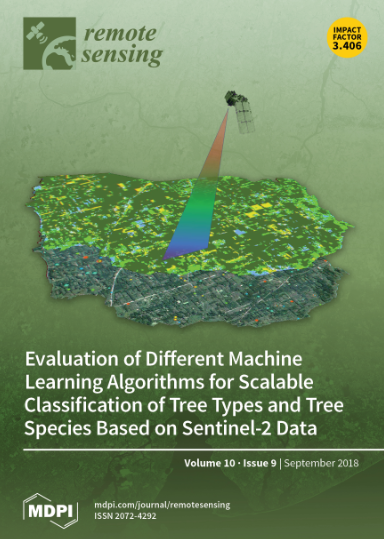Mitigating Disparate Elevation Differences between Adjacent Topobathymetric Data Models Using Binary Code
IF 4.2
2区 地球科学
Q2 ENVIRONMENTAL SCIENCES
引用次数: 0
Abstract
Integrating coastal topographic and bathymetric data for creating regional seamless topobathymetric digital elevation models of the land/water interface presents a complex challenge due to the spatial and temporal gaps in data acquisitions. The Coastal National Elevation Database (CoNED) Applications Project develops topographic (land elevation) and bathymetric (water depth) regional scale digital elevation models by integrating multiple sourced disparate topographic and bathymetric data models. These integrated regional models are broadly used in coastal and climate science applications, such as sediment transport, storm impact, and sea-level rise modeling. However, CoNED’s current integration method does not address the occurrence of measurable vertical discrepancies between adjacent near-shore topographic and bathymetric data sources, which often create artificial barriers and sinks along their intersections. To tackle this issue, the CoNED project has developed an additional step in its integration process that collectively assesses the input data to define how to transition between these disparate datasets. This new step defines two zones: a micro blending zone for near-shore transitions and a macro blending zone for the transition between high-resolution (3 m or less) to moderate-resolution (between 3 m and 10 m) bathymetric datasets. These zones and input data sources are reduced to a multidimensional array of zeros and ones. This array is compiled into a 16-bit integer representing a vertical assessment for each pixel. This assessed value provides the means for dynamic pixel-level blending between disparate datasets by leveraging the 16-bit binary notation. Sample site RMSE assessments demonstrate improved accuracy, with values decreasing from 0.203–0.241 using the previous method to 0.126–0.147 using the new method. This paper introduces CoNED’s unique approach of using binary code to improve the integration of coastal topobathymetric data.利用二进制编码缓解相邻地形测量数据模型之间的高程差异
由于数据获取的时空差距,整合沿岸地形和测深数据以创建区域无缝地形水深数字高程模 型是一项复杂的挑战。沿海国家高程数据库(CoNED)应用项目通过整合多个来源不同的地形和测深数据模型,开发了地形(陆地高程)和测深(水深)区域尺度数字高程模型。这些集成的区域模型被广泛应用于沿海和气候科学领域,如沉积物运移、风暴影响和海平面上升建模。然而,CoNED 目前的集成方法并不能解决相邻近岸地形和测深数据源之间出现的可测量的垂直差异问题,这些差异往往会在它们的交汇处造成人为的障碍和下沉。为解决这一问题,CoNED 项目在整合过程中增加了一个步骤,对输入数据进行集体评估,以确定如何在这些不同的数据集之间进行转换。这一新步骤定义了两个区域:微观混合区用于近岸过渡,宏观混合区用于从高分辨率(3 米或以下)到中等分辨率(3 米至 10 米)测深数据集之间的过渡。这些区域和输入数据源被简化为一个由 0 和 1 组成的多维数组。该数组被编译成一个 16 位整数,代表每个像素的垂直评估值。通过利用 16 位二进制符号,该评估值为不同数据集之间的动态像素级混合提供了方法。样地均方根误差评估结果表明,精确度有所提高,使用以前的方法,数值从 0.203-0.241 下降到使用新方法的 0.126-0.147。本文介绍了 CoNED 使用二进制编码改进沿岸地形测量数据整合的独特方法。
本文章由计算机程序翻译,如有差异,请以英文原文为准。
求助全文
约1分钟内获得全文
求助全文
来源期刊

Remote Sensing
REMOTE SENSING-
CiteScore
8.30
自引率
24.00%
发文量
5435
审稿时长
20.66 days
期刊介绍:
Remote Sensing (ISSN 2072-4292) publishes regular research papers, reviews, letters and communications covering all aspects of the remote sensing process, from instrument design and signal processing to the retrieval of geophysical parameters and their application in geosciences. Our aim is to encourage scientists to publish experimental, theoretical and computational results in as much detail as possible so that results can be easily reproduced. There is no restriction on the length of the papers. The full experimental details must be provided so that the results can be reproduced.
 求助内容:
求助内容: 应助结果提醒方式:
应助结果提醒方式:


